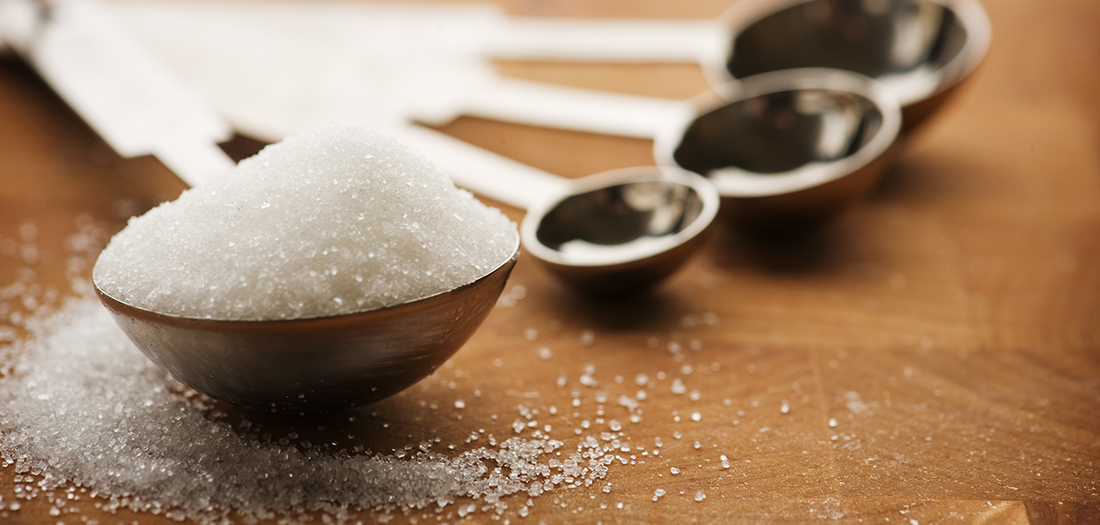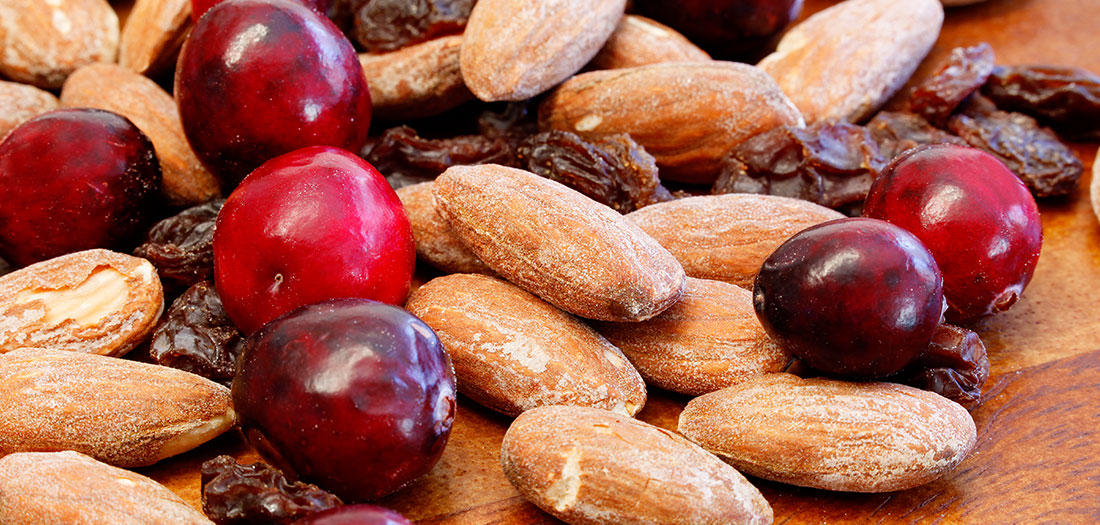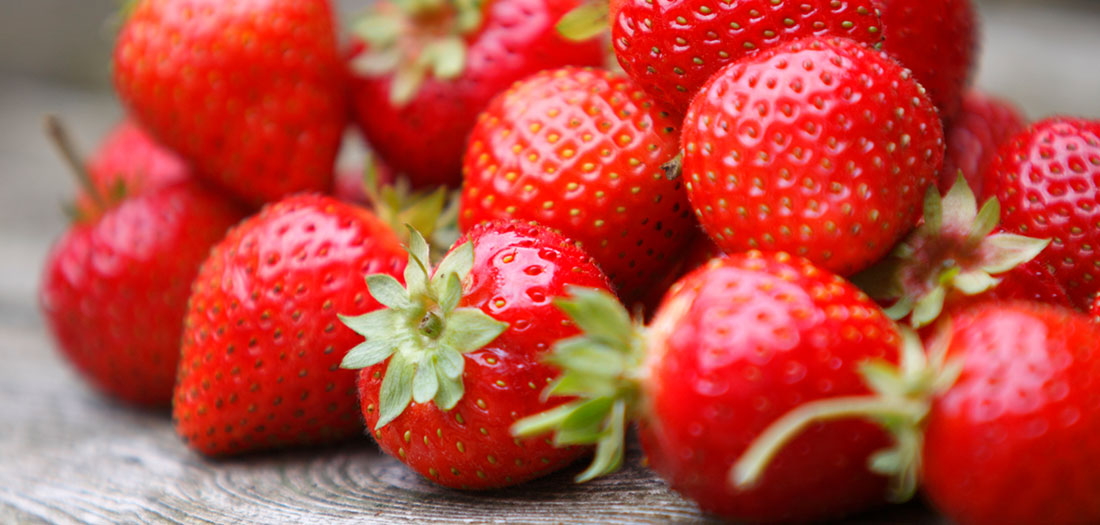Natural Sugars vs Processed Sugars: Is There a Difference?
February 1, 2017

Clients often tell us that they’ve heard that they should steer clear of fruit because of all the sugar—and they want to know if they really need to avoid some of their favorite fruits. With so much misinformation out there about nutrition, we understand why people think they should avoid all sugar, given that both natural sugar and processed sugar end up the same way in the bloodstream. But what’s the real deal? Is there a difference between natural sugar and processed sugar?
How they’re the same: No matter what form sugar comes in, it’s a simple carbohydrate that is broken down for energy. The sugar that’s in a piece of fruit is made up of fructose and glucose, just like processed sugar. Most fruits are 40-55% fructose (although this varies depending on the fruit—cranberries have 20% fructose and apples are 65% fructose). Table sugar is 50% fructose and 50% glucose. Your body processes fructose in the liver so it won’t trigger an insulin response, while glucose starts to break in the stomach and requires insulin to be released into the bloodstream so it can be metabolized quickly. Neither glucose nor fructose is better than the other, when looked at alone. It’s how it’s packaged that makes the difference.
How they’re different: The type of sugar (natural or refined) that you’re eating impacts your health differently. Natural sugar—the sugar that comes in fruit—is packaged with fiber, water, antioxidants, vitamins, minerals and disease-fighting phtytonutrients and other nutrients that improve your health. (Natural sugar is also found in milk and cheese and is called lactose.) Refined sugar comes from sugar cane or sugar beets, which are both processed to extract the sugar. Usually, this sugar is a combination of glucose and fructose, called sucrose.
Manufacturers add chemically produced sugar, typically high fructose corn syrup, to many foods and drinks. Other than providing a source of energy that the body can use, processed sugar doesn’t provide any benefits to the body—it lacks the fiber and health-promoting nutrients that occur in natural sugar sources. By contrast, processed sugar can harm the body when overeaten and may contribute to inflammation, disease, weight gain and obesity. This is why refined sugar is known as “empty calories”—calories without nutrients that benefit the body.
Is there a difference in how you feel after you eat natural sugar versus refined sugar? Yes! Refined sugar causes you to experience energy highs and lows and sugar cravings. Here’s why:
Refined sugar (think candy and cakes) has no fiber to slow down its absorption, so it’s digested rapidly and enters the blood stream very quickly, causing a (blood) sugar rush/high. This sugar high, in turn, causes the body to release a surge of insulin, which quickly removes the sugar from the blood to the tissues. This is what is often known as a sugar crash or “low,” and is the body’s way of signaling that it needs a quick pick-up and the quickest pick-me-up is more sugar! This launches a vicious cycle of highs and lows that lead to a deep craving for more sugar.
At the same time, sugary foods don’t provide the body any of the nutrients it needs to feel good and to sustain energy.
Importantly, natural sugar provides a longer source of energy without crashes. Natural sugar comes packaged in fruit—and fruit is a good source of fiber, which slows down the digestion of glucose so you don’t get the energy high/insulin spike followed by a sugar crash like you do when you eat refined sugar. Fruit also contains water, which helps to prevent dehydration and the tired, drained feeling that comes with it that mimic blood-sugar dips.
Here’s an important exception to the above: Fruit juice (if the fiber has been removed) will differ from fruit in the way it affects energy levels. While it still provides important nutrients that the body uses for good health, portions should be limited to prevent a blood-sugar spike and also to prevent weight gain.
Our Bottom Line
Overall, there is room in a wholesome, nutrient-packed diet for a small indulgence with added sugar—ideally 100 calories or less. However, the majority of people overconsume added sugars in their diet without realizing it. Truthfully, it’s beneficial for most people to make an effort to avoid added sugars because they can contribute to weight gain and take the place of other nutrient-rich foods. We suggest trying to satisfy sweet-tooth cravings with naturally sweet foods, like desserts made with fruits (as in the two recipes below). This helps people to appreciate less-sweet flavors, while also consuming added nutrients.
One of the easiest ways to avoid added sugars is to look for them on ingredient labels. Be aware that if you purchase a sweet food and don’t see the word honey or sugar or another sweetener that you recognize on the label, this doesn’t meant there isn’t added sugar. Instead, it probably means that the sugar is hiding under a different name. The good news is that added sugars will be listed on food labels by July 2018. Until then, be mindful that added sugars in foods and drinks may be listed on labels as: anhydrous dextrose, brown sugar, cane crystals, cane sugar, corn sweetener, corn syrup, corn syrup solids, crystal dextrose, evaporated cane juice, fructose sweetener, fruit juice concentrates, high-fructose corn syrup, honey, liquid fructose, malt syrup, maple syrup, molasses, pancake syrup, raw sugar, sugar, syrup and white sugar and more.
Skinny Speedy Cranberry Almond Cookies

Serves: 4 small cookies
Ingredients
- 1 very ripe banana, mashed
- 3 Tbsp. rolled oats
- 1 Tbsp. almond butter
- 1/8 – 1/4 tsp almond extract (use the higher amount if you like it more almond-flavored)
- 1 Tbsp. slivered almonds
- 2 Tbsp. dried cranberries
Directions
If using an oven rather than a microwave, preheat to 375°F.
In a medium sized bowl, smash banana. Add almond butter, almond extract and oats, stirring until thoroughly combined. Stir in cranberries and almonds.
If using a microwave: For one large cookie, simply spread mixture in bowl and microwave on high for 4-1/2 minutes. If you are making four cookies you can spray a plate, 4 small bowls or 4 ramekins. (The ramekins are nice to keep the cookies contained and perfectly round.)
Scoop out about 2-1/2 tablespoons each, and flatten on the plate or in ramekin. Repeat for each ramekin.
Place the four ramekins or the one plate in the microwave on high for 4 minutes. Depending on the strength of your microwave, cooking time may vary. Simply use a toothpick or a fork and poke cookie the whole way through. If wetness comes off on the fork or toothpick, continue to put back in microwave in 30-second increments until cooked.
If using an oven: Place four 2-1/2 tablespoons of the mixture on a greased baking sheet and bake for 10 minutes. Remove from oven when cooked completely through.
Makes 4 Cookies.
Nutrition Facts Per Serving (1 Cookie): 82 calories, 12 g carbohydrate, 3 g fat, 2 g protein, 25 mg sodium, 2 g fiber
Skinny Homemade Strawberry – Mint “Ice Cream”

Serves 2
Ingredients
- 1 cup strawberries, quartered (or frozen sliced strawberries)
- 2 fresh mint leaves
- 1/3 cup smooth and creamy yogurt, plain nonfat (we use plain but vanilla would work as well)
Directions
Put strawberries in a glass bowl and place in the freezer for 30 minutes. Strawberries should be partially frozen, but not hard. (If using frozen strawberries, allow them to sit at room temperature for about five to 10 minutes.) Using a blender, pulse the strawberries, mint and yogurt together. Once combined, blend on low speed for 15 seconds to make it creamy. Place your “ice cream” back into the bowl, cover with plastic wrap and freeze for at least an hour. Divide into two bowls and enjoy.
Nutrition Facts Per Serving: 40 calories, 0.3 g fat, 0 mg cholesterol, 23 mg sodium, 126 mg potassium, 8 g carbohydrates, 3 g fiber, 2 g protein




